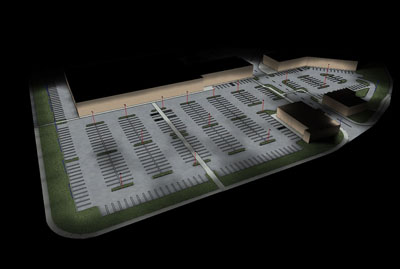Jacksonville, FL — Regency Centers, a national owner, operator and developer of grocery-anchored shopping centers, has reduced its energy consumption since 2010 by 3.4 million kilowatt hours.
Jacksonville, FL — Regency Centers, a national owner, operator and developer of grocery-anchored shopping centers, has reduced its energy consumption since 2010 by 3.4 million kilowatt hours. The installation of networked lighting controls at 48 shopping centers, combined with the use of LED lighting and more efficient HID lamps, accounts for the majority of these savings.
“The networked lighting controls currently generate about $400,000 in annual expense savings,” says Scott Prigge, senior vice president of national operations for Regency Centers. “Next year, we are on track to increase these savings by 55%, reducing our operating expenses by an additional $220,000. These savings have an immediate and impactful benefit to our bottom line, while also driving more competitive triple net expenses for our tenants.”
Networked lighting controls, connected to the Internet via a cellular modem, save energy through more precise management of the on-off schedules of properties’ site lighting systems. With conventional lighting controls, photocells or time clocks turn all lights on at dusk and off at dawn. But, networked lighting controls reduce light levels after peak traffic flows subside, typically an hour after stores close, when illumination needs are less than during operating hours. This load-shedding strategy reduces energy use by about 25% to 40%, while still maintaining adequate lighting for security, store personnel and overall property visibility.
 Besides reducing utility costs, the lighting controls increase property management effectiveness. The two-way communication provides remote access and real-time monitoring of properties’ site lighting, generating alarms for system failures, power outages and other maintenances issues. This reduces the need for routine maintenance inspections and allows problems to be detected and resolved almost immediately. This real-time, remote monitoring capability, combined with precise control of the lighting schedule, ensures the lights are on only when they are needed.
Besides reducing utility costs, the lighting controls increase property management effectiveness. The two-way communication provides remote access and real-time monitoring of properties’ site lighting, generating alarms for system failures, power outages and other maintenances issues. This reduces the need for routine maintenance inspections and allows problems to be detected and resolved almost immediately. This real-time, remote monitoring capability, combined with precise control of the lighting schedule, ensures the lights are on only when they are needed.
Currently, Regency has networked lighting controls installed at 48 neighborhood and community centers in California (7), Colorado (3), Florida (16), Georgia (5), Oregon (2), Ohio (2), Tennessee (4) and Texas (9). Regency plans to add the lighting control systems to approximately 30 properties in the next 6 to 12 months and will incrementally adopt the technology in its remaining portfolio where the investment makes sound financial sense.
“The payback period for the networked lighting controls is extremely attractive — typically 1 to 3 years, depending on the unique circumstances at each property,” says Mark Peternell, vice president of sustainability for Regency. “And this does not take into consideration the additional maintenance savings derived from extending the life of the fixtures, which are no longer burning all night long.”
In addition, Regency is participating in the U.S. Department of Energy’s Commercial Building Energy Alliance program to help speed market adoption of energy-saving technologies and define cost-effective solutions to accelerate the adoption of energy-efficient retail buildings. As part of this partnership, Regency is involved in DOE’s Solid-State Lighting initiative, which showcases high-performance LED products for general parking lot illumination. Six of Regency’s projects will have upgraded site illumination to LEDs by the end of the year, which, on average, reduces electrical use by 50%.
For more information, visit
http://www.regencycenters.com/company_information/greengenuity.php#.UGs0FZhlExA.
